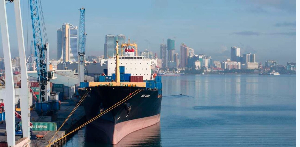 Container terminal and city landscape in port of Dar es Salaam.
Container terminal and city landscape in port of Dar es Salaam.
Tanzania has begun implementing an extended free storage offer for transit cargo to neighbouring countries, stepping up its bid to capture a larger share of the regional market from rivals like Kenya.
The Tanzania Ports Authority (TPA) said all transit cargo bound for Uganda and the Democratic Republic of Congo (DRC) will now enjoy 30 days of free storage, up from 15. The extension, first announced on August 19, took effect last week after port stakeholders agreed on modalities.
“This extension was approved to address the geographical disadvantage faced by customers from the mentioned countries,” said TPA Acting Director General Dr Baraka Mdima.
Officials say the move is designed to reflect transit realities to Uganda and the DRC, where infrastructure challenges make longer storage critical. The offer could lure importers away from Kenya’s Mombasa Port, which currently dominates the region’s cargo transit.
Uganda and the DRC rank first and third among Mombasa’s top transit markets.
In 2024, Ugandan cargo accounted for 65.7 percent of Mombasa’s transit market, or more than 8.8 million tonnes. That year, transit volumes through Mombasa rose 17.4 percent to 13.4 million tonnes, with South Sudan (12.7 percent), DRC (11.8 percent), Rwanda (5.1 percent), and Tanzania (3.4 percent) making up the rest.
The Central Corridor from Dar es Salaam to Uganda and eastern DRC (it also serves Rwanda and Burundi) stretches about 1,300 km, compared to the Northern Corridor from Mombasa at 1,700 km to the same countries.
The Central Corridor Transit and Transport Facilitation Agency estimates costs at $1.80 per kilometre per container, against $2.25 to $2.35 on the Northern Corridor—well above the international benchmark of $1.
Still, both ports face efficiency concerns. The 2024 Container Port Performance Index ranked Mombasa 375th globally, down 89 spots from 2023, while Dar es Salaam placed slightly higher at 367th out of 403 ports reviewed.
Kenya Ports Authority (KPA) says it is racing to expand Mombasa’s capacity. The port is targeting more than 2.4 million twenty-foot equivalent units (TEUs) this year, up from two million TEUs at the end of 2024. KPA intends to expand Terminal 19 after demolishing the old Kipevu oil terminal.
“Apart from port expansion, we are working with other stakeholders including CFSs to expand their facilities to accommodate increasing cargo throughput in the country,” said KPA Managing Director William Ruto.
He added that the container freight station (CFS) facilities have remained unchanged for two decades.
Meanwhile, Uganda has deepened its shift to Tanzania. In August 2024, the Uganda National Oil Company announced it had begun routing oil imports through Dar es Salaam, targeting 36 million litres per month and reducing reliance on Mombasa. The move followed years of complaints over congestion and technical bottlenecks at Kenya’s main port.
The World Bank recently cited delays and inefficiencies at Mombasa, while Kenya’s exports to Uganda fell in early 2025—the first decline in seven years—amid tariff disputes and transport bottlenecks on the Northern Corridor.
